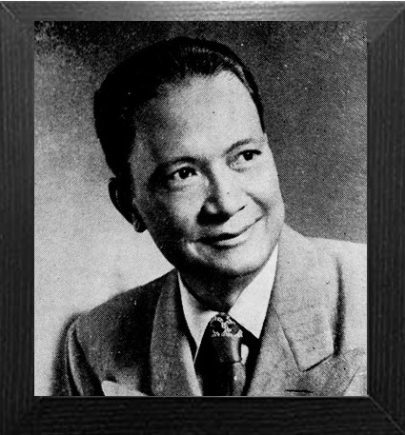Tahanan ng mga Katipunero
Home of Heroes of the 1896 Revolution
Ang Mga Maybahay
They Lived Here

Juan Felipe Nakpil
(May 26, 1899 – May 7, 1986)
National Artist
The country’s first National Artist for architecture, Juan Nakpil was born in Quiapo, Manila on May 26, 1899 to Julio Nakpil, a musician, and Gregoria de Jesus, the widow of Andres Bonifacio, both of whom were illustrious leaders of the Philippine Revolution against Spain.
He obtained his early education in Quiapo and Tondo, and subsequently enrolled at the Manila high School, where he graduated in 1917. He then took up engineering at the University of the Philippines. While in UP, he also studied freehand drawing, painting, and decorative arts under Fabian de la Rosa and Fernando Amorsolo, and sculpture under Maestro Ocampo. Two years later, he left for the United States and enrolled at the University of Kansas, where he obtained the degree of Bachelor of Science in civil engineering in 1922. He had already enrolled at Cornell University to pursue hydraulic engineering, when he received a wire from his uncle, Dr. Bautista Lin – who was defraying all the expenses for his studies – advising him to switch to another course. Heeding his uncle’s counsel, he sailed for France in the summer of 1925 to take up architecture at the Fountainbleau School of Fine Arts, where he received his diploma d architecture. He capped his architecture studies the following year with a master’s degree earned at Harvard University in Boston under a Joseph Evelynth fellowship. During his stay in Harvard, he entered a competition opened to the students of the Boston Institute of Technology, members of the Architects Club of Boston, and the architecture students of Harvard. He was the Harvard student who won in it.
Upon his return to Manila in 1926, he worked as assistant architect at the Bureau of Public Works. At this time, he met Anita Noble, then the reigning beauty queen, whom he married in 1927. Their marriage was blessed with five children – Ariston, Francisco, Eulogio, Annie, and Edith. Wanting to share his talents and knowledge with others, he went into teaching from 1927 until the outbreak of the war.
In 1928, Nakpil joined the firm Andres Luna de San Pedro. Later, he worked as a designer for Don Gonzalo Puyat and Sons. In 1930, he opened his own architectural firm.
Among the notable structures he designed were the UP administration building and library, the Quezon Institute, the Social Security Systems building, the State and Ever Theaters, and the restored Quiapo Church and Rizal’s house in Calamba, Laguna.
Nakpil started restoration work on the shrine in 1932. It was interrupted by the Second World War, and was only resumed after the liberation period. The restored Rizal house was inaugurated on June 19, 1950, on the occasion of the national hero’s 89th birth anniversary, by President Elpidio Quirino.
Nakpil’s three sons also became architects, and eventually joined his firm. Whey they did, he renamed it “Juan F. Nakpil and Sons.” On its 30th anniversary, the firm was voted by the Business Writers Association of the Philippines as the “Architectural Firm of the Year.” In 1971, the Republic Cultural Heritage Award was presented to Nakpil and his sons. The firm was registered anew as “Nakpil, Nakpil, Nakpil and Nakpil” in 1972.
In 1952, Nakpil was made an honorary correspondent member of the Societe de Architectes par le Gouvernement Francais and, in 1955, a Chevalier de la legion d’ Honneur. A year later, he was made a correspondent member of the Colegio de Arquitectos de Chile.
In 1954, he became the First Filipino and non-American to be made fellow of the American Institute of Architects. He was the organizer and past president of the Philippine Architects Society, now Philippine Institute of Architects.
Named “Architect of the Year” in 1939, 1940, and 1946, and “Most Outstanding Professional in Architecture” in 1951 by the Philippine Association of Board Examiners, Nakpil was bestowed the gold medal of merit by the Institute of Architects in 1950, the Presidential medal of merit, by President Ramon Magsaysay in 1955, and the Rizal Pro Patria Award in 1972.
On June 12, 1973, he was named national Artist.
Nakpil died on May 7, 1986 at the age of 87. He was a state funeral and was buried at the Libingan ng mga Bayani.
References:
CCP Encyclopedia of Philippine Art Volume 3. Manila: Cultural Center of the Philippines, 1994 Cornejo, M.R. Commonwealth Dictionary of the Philippines. Manila, 1939.
Galang, Zoilo. Encyclopedia of the Philippines Volume 9. Manila: P. Vera and Sons Company, 1936.
